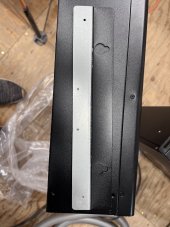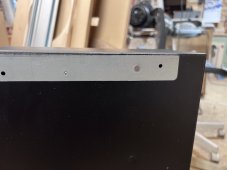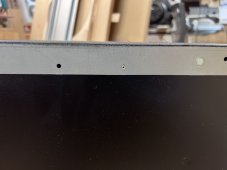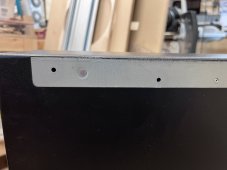So I went back and read some of the earlier posts.
So with all grounds (aka green wire, aka bare wire) disconnected everywhere and the inverters disconnected from solar and the batteries (I have no grid input during testing), the inverters still showed zero resistance across the neutral and ground terminals. Just in case there was a magic relay in the system somewhere, I also tested with the inverter running when there was only solar input, and also when there was solar input and AC output. Neutral and ground are connected in all operational scenarios.
I don't trust resistance readings if a system is powered. The voltage present can easily screw up the measurement.
1) If the inverter is powered on, the best way to check for bonding is to check voltage from neutral-out to ground with no load on the inverter. If you see anything more than a volt or two, it is floating (no bond). This check should be done when the inverter is in pass-through and again when under inverter mode.
Case 1.1 Voltage found between Neutral-out and ground in both modes.
- There is
no bond being generated by the inverter at any time
- The input neutral-in is
not being connected to neutral-out in passthrough mode.
Case 1.2 Voltage Voltage between Neutral-out and ground in inverter mode but not in passthrough mode.
- There is
no bond being generated by the inverter
- The neutral-in and neutral out
is being connected in Pass-through mode.
Case 1.3 No voltage between neutral-out and ground in both modes.
- We can not tell much. There could be dynamic bonding
or there could no neutral switching and a permanent bond.
2) If the inverter is totally disconnected from any power source (including the ground wires)
Case 2.1: There is no resistance between output neutral and ground,
- we know there is some kind of binding done by the inverter.... but we do not know if it is a dynamic bond or a permanent bond. (This is the same as case 3 above.
Case 2.2: There is high resistance between output neutral and ground.
- There is probably no dynamic bonding. (All inverters I am aware of that do dynamic bonding have the bond enabled when powered off)
- There is no permanent bond created by the inverter.
Case 2.3 There is no resistance between output neutral and input neutral
- The system probably has a common neutral.
Case 2.4 There is high resistance between output neutral and input neutral
- The system does not have a common neutral but may connect neutral in and neutral out in passthrough mode








